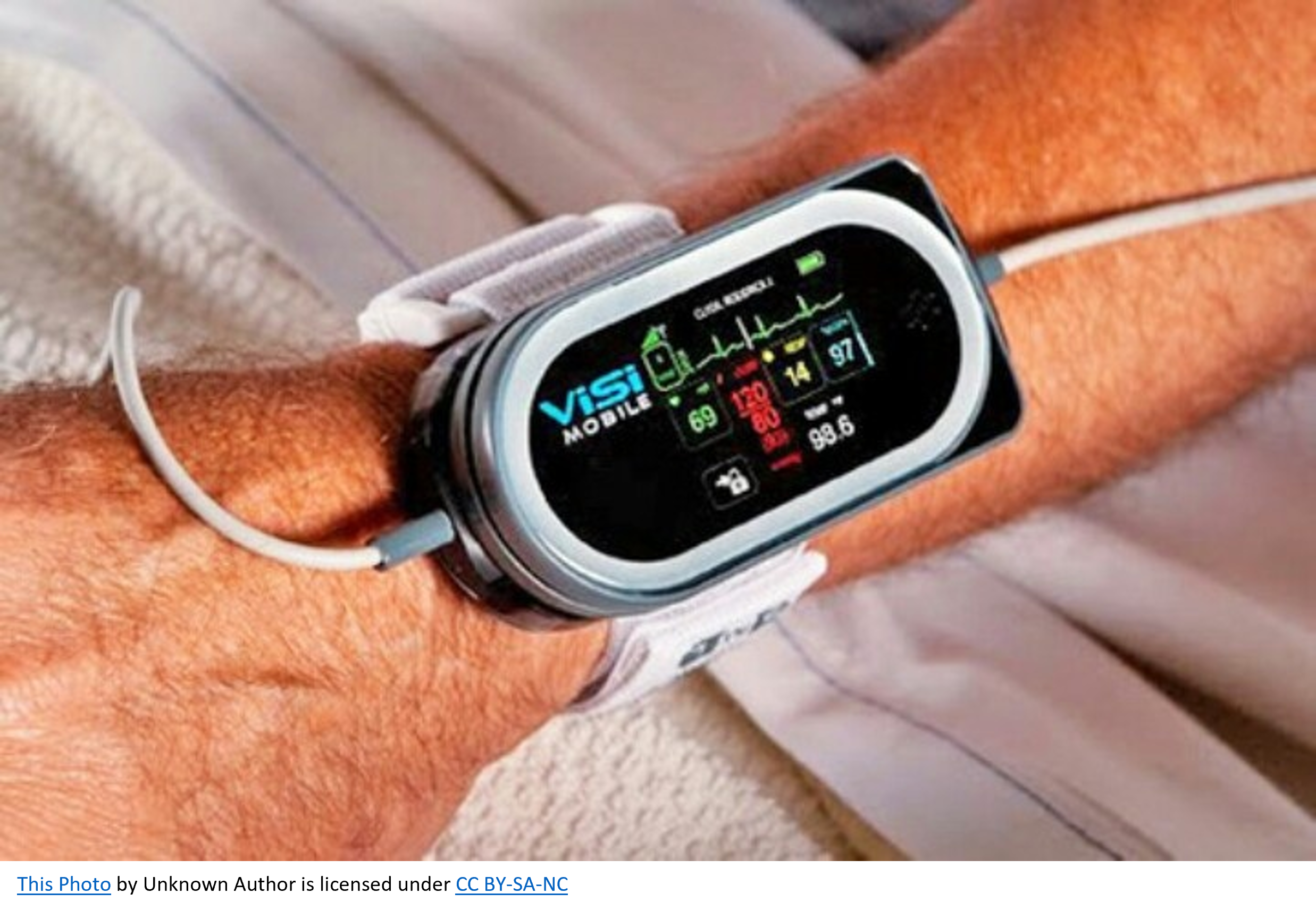Wearable health technology, equipped with advanced sensors and AI algorithms, is revolutionizing healthcare. These devices not only aid in disease detection but also track vital signs, monitor recovery progress, and optimize rehabilitation programs. By continuously collecting health data, wearables can alert users and clinicians to potential health issues—such as an impending asthma attack—before symptoms even emerge.
While wearables have become commonplace among consumers, healthcare providers are also leveraging this data to gain deeper insights into their patients’ health. Beyond improving diagnostics, these devices offer a more advanced and secure method of sharing sensitive medical information, eliminating the need for outdated practices like printed reports or emailed records.
Examples of wearable health technologies
Wearable technology has revolutionized healthcare, offering real-time monitoring and personalized insights. Devices such as fitness trackers (e.g., Fitbit, Garmin) track physical activity and sleep patterns, while smartwatches (e.g., Apple Watch, Samsung Galaxy Watch) monitor heart rate, ECG, and blood oxygen levels.
For chronic conditions, continuous glucose monitors (e.g., Dexcom G6, Freestyle Libre) assist individuals with diabetes by providing real-time blood sugar readings, and wearable ECG monitors (e.g., AliveCor KardiaMobile) help detect heart abnormalities.
Smart clothing (e.g., Hexoskin Smart Shirts, Owlet Smart Socks) integrates biometric sensors to track breathing rate, heart rate, and movement, while wearable blood pressure monitors (e.g., QardioArm, Omron HeartGuide) provide convenient hypertension management.
Moreso, respiratory conditions benefit from smart inhalers (e.g., Propeller Health), which help asthma patients track medication usage and environmental triggers.
Future projections for wearables
Wearable healthcare technology is rapidly evolving, with significant growth projected in the coming years. Market research predicts that the wearable medical devices industry will grow at a 16.6% compound annual growth rate (CAGR), reaching USD 156 billion by 2032. Analysts attribute this expansion to rising demand for real-time health monitoring, advances in AI-driven diagnostics, and increasing adoption of wearable technology in healthcare.
According to market analysis, the smartwatch segment of the wearables market generated USD $47.94 billion in revenue in 2024. Market analysts forecast that the global smartwatch market will expand to $143.19 billion by 2032, driven by a 15.6% compound annual growth rate (CAGR). This rapid growth reflects rising consumer interest in health and fitness tracking, along with continuous advancements in smartwatch technology, including enhanced sensors, AI-powered diagnostics, and improved battery life.Smartwatches are becoming increasingly sophisticated, playing a greater role in preventive healthcare and medical monitoring. Their evolving technology allows for more accurate tracking of vital signs, early detection of health risks, and seamless integration with healthcare providers. As advancements in AI and biometric sensors continue, smartwatches will enhance personalized wellness strategies, promoting proactive health management.
Wearable blood pressure monitors are becoming increasingly relevant, as hypertension affects 1 billion people worldwide, with prevalence expected to rise to 1.5 billion by 2025. A study presented at the American Heart Association’s Scientific Sessions found that while wearable health devices can help manage cardiovascular health, their usage is lower among individuals who need them most, such as those with heart disease or at risk due to conditions like diabetes and obesity. Despite this, over 80% of users at risk for cardiovascular disease expressed willingness to share their wearable health data with healthcare providers to improve their care.
How wearable technology is transforming health
Wearables track heart rate, sleep patterns, activity levels, and other vital signs, offering insights into an individual’s overall health status. This constant tracking allows users to identify irregularities and seek medical attention before symptoms escalate. Wearables have also played a crucial role in managing chronic diseases, such as diabetes and cardiovascular conditions, by offering personalized insights and reminders for medication adherence. By monitoring stress levels, tracking sleep patterns, and providing biofeedback, wearables aid in the management of anxiety and other mental health conditions
Wearables encourage users to be more physically active, manage stress, and improve sleep habits through biofeedback, personalized recommendations, and activity tracking. Studies show that individuals using wearables tend to increase their physical activity, with an average boost of 1,300 steps per day, leading to improved cardiovascular health and reduced risk of obesity.
The integration of wearable technology into healthcare systems has further enhanced remote patient monitoring, reduced hospital visits, and enabled proactive interventions. By promoting proactive health management and early intervention, wearables can help reduce the need for costly hospitalizations and emergency room visits.
Wearables actively collect health data and share it with healthcare providers, enabling personalized treatment plans and proactive medical interventions. Physicians use this real-time data to monitor chronic conditions, detect early warning signs, and adjust treatments accordingly. By integrating wearables into medical care, providers enhance patient outcomes, improve disease prevention, and offer tailored wellness strategies. This allows for more tailored care and potentially better outcomes for individuals with chronic diseases.

Challenges facing wearable health technology and possible solutions
Data Accuracy & Reliability
One major challenge with personal health wearables is data accuracy and reliability, as variations in sensor quality and user adherence can lead to inconsistent readings. To address this, manufacturers are implementing AI-driven calibration techniques to refine measurements and ensure more precise tracking of vital signs. Additionally, user education and improved sensor designs are helping to enhance data reliability.
Privacy & Security Risks
Privacy and security risks are another concern, as wearable devices collect sensitive health data that could be vulnerable to breaches. To mitigate these risks, companies are adopting end-to-end encryption and decentralized data storage to enhance security. Users now have greater control over their health data, enabling them to manage sharing permissions with healthcare providers more effectively.
Battery Life Limitations
Wearables often face battery life limitations, requiring frequent charging, which can be inconvenient for users. Solutions include advancements in battery technology, such as solar charging, kinetic energy harvesting, and ultra-low-power sensors, which significantly extend battery life and usability.
User Engagement & Adherence
Maintaining user engagement and adherence can be difficult, as some individuals lose interest or struggle to interpret wearable health data. To improve engagement, developers are integrating gamification features, personalized feedback, and AI-driven health coaching, making wearables more interactive and motivating users to maintain healthier habits.
Interoperability Issues
Lastly, interoperability issues pose challenges, as wearables may not seamlessly integrate with healthcare systems, limiting their effectiveness for clinical use.Industry leaders are actively collaborating to develop standardized data protocols that enable wearables to sync seamlessly with electronic health records. This integration enhances coordination between patients and medical professionals by providing real-time health insights, improving diagnostics, and streamlining treatment plans. As interoperability improves, wearable devices will play a crucial role in modern healthcare, bridging gaps between consumer health tracking and clinical decision-making.
Wearable health technology is revolutionizing healthcare by enabling continuous monitoring, improving chronic disease management, and facilitating early detection. Despite challenges in accuracy, security, and interoperability, advancements in AI, encryption, and battery efficiency are enhancing effectiveness. As innovation continues, wearables will play a crucial role in preventive care and personalized treatment. Read more on How AI Is Revolutionizing Patient Care.


